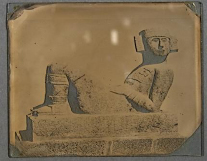
Topics in Photographic Preservation 2011, Volume 14, Article 11 (pp. 59-69)
Presented at the PMG session of the 2010 AIC Annual Meeting in Milwaukee, Wisconsin
A technical study of photographs created by Felice Beato in Asia provided information on medium, printing methods and light sensitivity. Selected works in the Department of Photographs collection at the J. Paul Getty Museum (JPGM) were examined using high-resolution digital imaging and technical analysis. Dr. Dusan Stulik and Art Kaplan from the Getty Conservation Institute (GCI) provided non-destructive analysis using X-ray fluorescence spectroscopy (XRF) and Fourier transform infrared spectroscopy (FTIR) to confirm toning and distinguish between print editions. James Druzik and Christel Pesme of GCI performed microfade testing to assess the light sensitivity of Beato’s hand-colored prints. A comparative visual examination of 19th century material from the Getty Research Institute (GRI), Special Collections, conducted with Teresa Mesquit, aided identification of glass plate negative processes used by Felice Beato.
In 2007 a large acquisition of more than 800 photographs by 19th century documentary photographer Felice Beato was acquired by the Getty Museum. The acquisition provides important examples of early photojournalism and the beginning of commercial photography in Asia. An exhibition and associated catalog written by Anne Lacoste with examples drawn from the Museum’s collection provide a detailed account of the photographer’s career. A selection of prints, panoramas and albums from Burma, China, India, Japan and Korea are represented. This study of Felice Beato was achieved through joint efforts with the Department of Photographs at the JPGM, the GCI and the GRI.
Felice Beato made many important contributions to the history of photography. In addition to Anne Lacoste’s comprehensive exhibition catalog, his life and career have been chronicled in several publications on the history of photography in Asia. He is widely believed to be the first documentary photographer to depict fallen soldiers on the battlefield. Beato’s images were reproduced in newspapers all over the world, providing gruesome details of Britain’s conflicts in China, in particular. He is also known for his use of the panorama format and hand-coloring of images taken from his travels in China, India and Japan. Widely distributed by publishers in England, these images provided the western world with an in-depth look at Asian culture. Beato’s lengthy career spans nearly 50 years of photographic history. It is well documented that he maintained photographic studios in Japan and Burma for over thirty years. In addition, he owned export businesses featuring Asian antiques and tourist trade goods and made investments in real estate, silver mining and stocks on the Japanese market. In all of his ventures, Beato enjoyed many successes and suffered several failures.
In the early 1850’s the Beato family relocated to Constantinople where they met James Robertson. Robertson married Beato’s sister and a lifelong friendship and professional collaboration began. Felice learned photography with his younger brother, Antonio, and brotherin-law James Robertson sometime around 1855. Robertson and the Beato brothers employed the calotype process initially, later learning albumen and collodion glass plate negative processes for their first portrait studio in Constantinople. A trained metal engraver, Robertson worked for most of his life as a currency engraver for the mint in Constantinople. The Robertson & Beato Co. studio in Constantinople was active from around 1855 until 1867. The primary focus was architectural scenes in Constantinople, but they also traveled to the Crimea as official photographers for the British Royal Army, to the Middle East, and to India to record the mutiny. In addition, from 1856-58, the Beato brothers were working in a studio they set up in Calcutta. In 1860, Felice went to China as an official photographer again for the British Royal Army and Antonio is believed to have relocated to Egypt. Each brother worked independently in successful ancillary studios, which ultimately replaced the studio in Constantinople.
Felice Beato eventually relocated to Yokohama in 1862 with friend Charles Wirgman, who was an illustrator for the London News. Wirgman started the first English news publication in Japan called the Japan Punch published from 1862-1873. Beato and his studio were regularly featured. This relationship brought him a great deal of notoriety, even celebrity, early in his career. As a photographer, Beato suffered huge losses to his negative inventories on several occasions. His negatives from India were destroyed accidentally in 1859 and were subsequently reproduced by the Hering Publishing Company of London via copy negatives from an original set of albumen prints. Hering also purchased the rights for many of the images of China. In Yokohama, Beato’s first Japanese inventory was destroyed in a massive fire in 1867, which he never fully recovered from financially. In a meeting with the London and Provincial Photographic Association on February 18, 1887, Beato stated that he retired from professional photography after the fire in Japan, later producing prints and albums only as a hobby.
There is some speculation about when Felice Beato actually began taking pictures. Research indicates that he first began as a photographer’s assistant to Robertson in 1855.Very little is known about Felice Beato’s photography equipment. Beato claimed to have purchased a French camera lens in Paris in 1851, which was his sole lens throughout his career. His description of the lens is consistent with other equipment of the time. The lens had a 3-foot focal length, which would accommodate the panorama format. Field cameras in use at this time could hold a 12 x 15 inch glass plate negative, allowing for a focal length of 30 inches or more with a bellows. Beato seems to have employed a method of carefully placing and shifting the camera on a tripod to capture images in continuous sequence. He then printed and hinged together panorama prints in an accordion style foldout for album editions. Beato traveled extensively during the early 1860s, producing editions with panorama imagery, eventually settling in Yokohama and later Mandalay. He retired from documentary expeditions by 1863, traveling in an official capacity to Korea in 1871 for the American Naval Expedition, and later to Sudan as a freelance photographer. Beato maintained a photographic studio until sometime around 1898 and remained an entrepreneur in the Far East until his death in 1909.
In recent years, there is increasing speculation by historians that Felice Beato worked with albumen glass plate negatives during the early years of his career, 1855-1862, rather than the predominant wet collodion process. Evidence to support this theory was found in this study in examples of the fieldwork in Asia and Asia Minor. In addition to details observed in the images, there is some testimony from Beato himself published in the British Journal of Photography in 1886. Beato described his preferred working methods, creating albumen plates for expeditions and creating collodion plates for the production of copy prints for albums and portraiture. It is believed that Beato may have preferred albumen plates to collodion in that collodion may have been difficult to acquire and maintain in a hot, humid climate.
The albumen glass plate negative process was first described by Abel Niépce de Saint-Victor in the Comptes rendus de l'Académie des Sciences in 1847. Glass plates were coated with a solution of albumen and potassium iodide, then sensitized with a silver nitrate solution. Plates were typically coated with the aid of a leveling rack and a spinning apparatus before being sensitized to produce a thin, consistent coating on the glass. The primary disadvantage of this process was a slow exposure, typically for twenty minutes or more, and the development time could be several hours. Despite the high resolution achieved with albumen, it was quickly phased out when Frederick Scott Archer published on the wet collodion negative process in 1851. Collodion negatives were made using a mixture of cellulose nitrate, alcohol, ether and potassium iodide, then sensitized in silver nitrate solution. The wet collodion process had the important advantage of shorter preparation, exposure and development times. Portraits and movement could now be captured in sharper focus. Other hybrid processes were in use, often referred to as collodion dry plate processes, which were intended to make collodion negatives more versatile for fieldwork. The dry collodion processes slowed the development time to such an extent that they never gained popularity over the wet processes. Variations on all of these processes are widely published in early photographic journals. Very few examples of albumen glass plate negatives are available for study since they were far less popular than the collodion process and were routinely recycled for reuse.
In order to verify that Beato’s early prints could show evidence of his use of albumen rather than collodion negative processes, comparisons were made at the Research Institute’s paper conservation lab using Special Collections materials. Similar deterioration characteristics were documented on known glass albumen plates.
Distinguishing between albumen, collodion and gelatin negative image layers can be difficult. This study focused on albumen and collodion processes that would have been used by Beato prior to 1863. Although Beato used paper negatives while working in the field with James Robertson, they were not considered for this study because the characteristics of a calotype are readily distinguishable from the high resolution and tonal range seen in albumen negatives. Two studies on the characteristics of early glass plate negatives were particularly helpful in the examination process. Clara Von Waldthausen published a study on the albumen glass plate negative in Topics in Photographic Preservation, Volume 12 entitled the “The Great Exhibition of 1851: An Introduction to a Research Project and Preliminary Findings”, and Constance McCabe published a detailed description of collodion (and gelatin) negatives entitled “Preservation of Nineteenth Century Negatives in the National Archives” in JAIC Volume 30. A brief summary of the differences between the materials can be given here. Collodion emulsions (from both dry and wet plate processes) can have opacity or milkiness and iridescence in reflected light. (Figure 1) These features are not observed with albumen binders. Both image layers can be found varnished, often with shellac. Note that albumen plates examined at the GRI also have masking and other manipulations. (Figure 2) Depending on the particular collodion formula, the tone of the emulsion can vary greatly from green to pink and shades of gray or black. Albumen binders also vary in tone, ranging from yellow to olive green to orange or brownish tones. This variation in tone can make distinguishing between the processes difficult.

Figure 1. Augustus Le Plongeon. Archaeological Field Studies. ca.1860-70. Collodion glass plate negative. 10 x 12 cm 2004.M.18. Courtesy GRI.
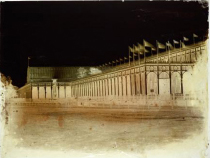
Figure 2. Henry Negretti and Joseph Zambra. Exhibition of Industry of All Nations, Crystal Palace, 1851. Albumen glass plate negative. 18 x 23 cm. 88.R.13. Courtesy GRI.
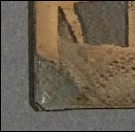
Figure 3. Detail of fingerprint and flow lines on collodion wet plate negative. Courtesy GRI.
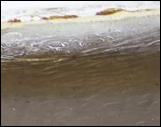
Figure 4a. Detail of streakiness and air bubbles on collodion negative. Transmitted illumination, 6.25x magnification with Leica stereomicroscope. Courtesy GRI.
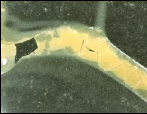
Figure 4b. Detail of cracking varnish on collodion wet plate negative. 6.25x magnification. Courtesy GRI.
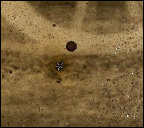
Figure 5a. Example of star shaped deterioration in the Crystal Palace albumen negative. Transmitted illumination. 25x magnification with Leica stereomicroscope. Courtesy GRI.

Figure 5b. Detail of star shaped cracking in an albumen silver print. Beato. Men of Punjab. 2007.26.130. Courtesy JPGM.
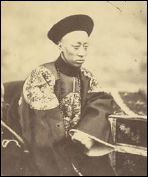
Figure 6. Beato. Portrait of Emperor Kung, 1860. Albumen silver print. Details Below. Courtesy JPGM.


The thickness of the image layers and glass supports varies, so these characteristics cannot be used as a marker for one process or the other. Albumen was often dried mechanically to speed up the drying process. This aided in the creation of an even binder layer and uniform image density, which is generally very thin. The coating is very hard and deterioration and flaws are comparatively very small in scale. In contrast collodion is often visibly uneven in density due to hand-pouring either the sensitized collodion solution or varnish onto the plate during the creation process. Collodion plates also can have a fingerprint mark in one corner from hand-pouring. (Figure 3) A varnish layer was often necessary for collodion emulsions because they were vulnerable to abrasion and peeling. The wet collodion process yielded an image layer that could be soft or tacky, and they are often referred to as semi-dry. The varnish layer can be very thick with streaks, air bubbles and drip marks that interfere with the image. (Figure 4) Varnish can make the image layer vulnerable to cracking and flaking.
When negative image layers swell or contract they have a tendency to lift and break away from a dimensionally stable glass support in conditions of high heat and humidity. On a microscale, we observe some distinct variations between the different types of negative image layers. Albumen forms unique star-shaped patterns in areas of fine cracking. (Figure 5) The star shapes can be seen in areas of air pockets, or possibly trapped dust particles. Air bubbles tend to break and spread into alligator cracks within a small circular area. (Figure 6) Along the edges of the albumen plate, extensive networks of tiny cracks branch off between areas of loss. (Figure 7) The cracking pattern of collodion is generally similar to albumen, but collodion examples tend to have larger areas of crescent-shaped flaking and lifting along plate edges. (Figure 8)
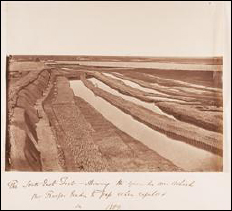
Figure 7. Detail showing albumen cracking along left edge. Beato, View from South East Fort at Taku, 1859. Albumen silver print. 2007.26. Courtesy JPGM.
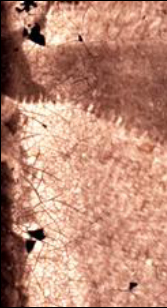
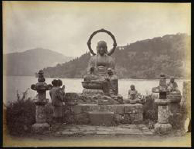

Figure 8a. Beato. Bronze of Jeso Sama, 1863. 2007.26.13. Detail showing lifting collodion emulsion on the negative. Courtesy JPGM.

Figure 8b. Detail of cracking collodion emulsion on a wet plate negative. 6.25x magnification. Courtesy GRI.
Evidence of negative deterioration in the prints further underscores the sensitive nature of the medium and the theory that Beato may have experienced a scarcity of materials working in the field in Asia.
In addition to visual examination of prints and negatives, scientific analyisis of prints provided useful confirmation of Beato’s photographic process. Dr.Dusan Stulik and Art Kaplan of the GCI performed nondestructive analysis on thirty-five Beato prints dating from 1855 -1890. Toners were identified with XRF analysis, distinguishing the copy prints made by the Hering Publishing Co. of London in 1862 from Beato’s original field prints in China and India, 1858-1860. The Hering editions contain large concentrations of gold and platinum, a difference from the series of 1860, which were gold-toned. The 1860 prints can also be contrasted visually from the Hering edition by the presence of a negative plate mark in the lower right corner, excessively high contrast and graininess of the images, and significant differences in the weight and thickness of the paper supports and binder layers.
With respect to negative image layers, identification of binders and emulsions using nondestructive techniques of analysis is difficult. Collodion recipes often included an albumen layer, which can make the distinction between the two processes unclear without a cross section. Coatings and varnishes can also impede process identification.
A challenge faced by conservation for this exhibition was to determine the level of light sensitivity of the materials requested for display, potentially scheduled for multiple venues. Beato’s hand-colored prints created for the export market in Japan in the 1860s were very popular and many copies were produced and exported. These prints are widely collected and can be found in many museum collections.
Beato and several of his contemporaries exploited neighboring woodblock-printing studios by hiring master woodblock printers as colorists. Advertisements describing the work of Japanese colorists and a print in Beato’s series on Japan depicting a colorist with his palette support the theory that these highly skilled artists often used the same materials from the woodblock palette to color scenes of everyday life in Japan. Many of these colorants are known to be mixtures of highly fugitive organic pigments, which are prone to fading.
The GCI conducted microfade testing to assess the light sensitivity and stability of the colorants on the hand-colored albumen photographs. Jim Druzik and Christel Pesme from GCI performed testing on 22 prints from the Scenes of Japan album, dating from 1863-1865. Each print contains an average of 7 different mixtures of colorants. Testing was conducted with a Beta Machine Micro-fading Tester (MFT).
First invented by Dr. Paul M. Whitmore, the microfade tester has been adopted and in practical use by approximately ten institutions worldwide for almost a decade. GCI began using this technology to study the sensitivity of drawing media and to examine the efficacy of the GRI’s system for measuring changes in delta E with an X-rite spectrodensitometer in the library collections. The GCI micro-fading program now encompasses the examination and testing of works of art and archival materials in the GRI and JPGM collections, including photographs. In addition, natural history materials such as feathers and insects, modern art components and even paint materials used on 10th century Buddhist wall paintings in China are part of GCI’s study. The MFT (Figure 9) is a customized device with an intensity controller for the light source, a spectrometer to measure color change, a clamp to suspend the light source over the artifact, and a computer to measure and control the exposure experiment with a small camera for capturing detailed images of the test area. The computer also assists in the interpretation of the data gathered by the spectrometer.
The MFT concentrates a highly focused beam of light (300-400 micrometers in diameter or 0.3-0.4 mm) onto a test area and measures color change simultaneously while fading the area of exposure. The instrument is very sensitive to minute changes in color appearance and it can derive all the useful data needed well before the test area reaches a visible change.
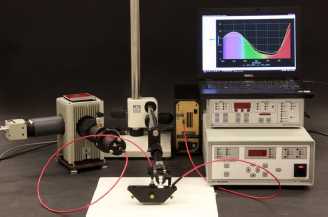
Figure 9. Courtesy GCI
The ISO Blue Wool Standard is used to compare the color change in the sample. The International Standards Organization Blue Wool Standard is a series of dyed wool cards consisting of 8 shades of blue wool. These cards provide a standard against which subsequent fading can be measured with the instrument. Blue Wool Sample 1 is extremely light sensitive, while sample 8 is the most stable.
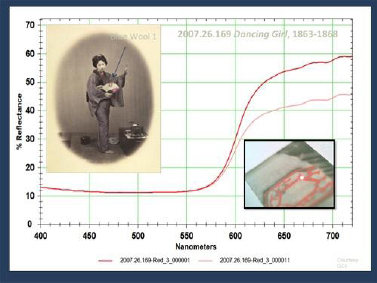
Figure 10. Courtesy GCI
The data collected from micro fade testing allows GCI scientists to determine if an artwork is light sensitive, how sensitive it is, and that information is used by conservation and curatorial staff to determine how best to display these materials. GCI provides the requestor with a detailed written report describing the measurements taken for each print. The results are illustrated in graphs and mapped images (Figure 10) and a summary section entitled “Risk Management”. An example of the risk management section of the report shown here (Table 1) provides each object with a Blue Wool sensitivity ranking and corresponding allowable exposure, expressed as a percentage of the Preservation Target or PT. The PT encompasses all the conditions it takes for a given adverse environmental effect to become perceptible. For color change, the perceptible effect is visual discrimination. The smallest perceptible change has been conventionally defined as a “just noticeable difference” or JND, which is sometimes used interchangeably with “just noticeable fade” or JNF. They are not the same, but closely related concepts, described as values from slightly less than 1 to 1.6 Delta E.
If for example, a preservation policy states that no visible change should be evident before 25, 50, or 100 years – the “target”, specified as a single just noticeable difference is fixed by the display illumination, total duration of exposure and inherent light-sensitivity of its most sensitive component. For the JPGM, conservatively, we have described a typical exhibition of 20 weeks, 6 days per week, 11 hours of illumination per exhibition day and 30-50 lux or (approximately 3-5 foot candles). The time interval to Just Noticeable Difference has not been specified, but can be estimated as a percentage delta E=1, which serves as a guide toward the Preservation Target for the photograph. The GCI provides calculations for risk management with both Michalski’s 300,000 lux hours and the Ashley-Smith’s 500,000 lux hours exposure at BW1. The GCI chooses to follow the more conservative interpretation of Just Noticeable Fade described by Michalski.

Table 1. Courtesy GCI.
Michalski reminds us that in managing risk we can only utilize the best information available to us at the time. This is often termed "bounded rationality". Jim Druzik cautions that it’s important to note that just noticeable fade is a theoretically perfect color comparison. That is, two large side-by-side swatches viewed in daylight at 500 lux by a young person with perfect color vision. David Saunders, Agnes Brokerhof, Ray Lafontaine and others have shown that in reality, for small colored areas, viewed in situ on works of art with complex visual compositions, real just noticeable fades are probably on the order of 3-6 times larger than those calculated for ideal conditions. This is an important distinction because although a JNF may occur within a year of continuous exposure to 60 lux, in reality, the viewer might still not notice it for 3-6 years.
Extrapolating the results of accelerated aging tests such as microfade testing is a risk. There is incomplete knowledge of all the factors that contribute to color change in these materials and how they interact with each other. Using the MFT, operators can say with some confidence that these prints have light-sensitive colorants and that they have probably identified the most sensitive colored areas on the object. But when using the information presented in the micro fade testing report, conservators must always remember that these rankings serve as guidelines for policy decision-making and that some variation in the sensitivity of objects is possible. In Table 1 interpret the last two columns (% used) in light of these comments on the inherent uncertainties of this technique.
A collaborative effort between the GCI, the Museum and the GRI, we found support for Beato’s techniques within historical literature, art historical research, technical analysis and examination of the prints themselves. An extensive examination of Beato’s prints in the museum’s collection and the albumen and collodion negatives at the GRI provided many examples of negative deterioration. Albumen plates can be distinguishable from collodion plates in many cases. The use of a stereomicroscope and a trained observer is essential for this identification process. Important distinctions between prints made by Beato’s studio and the Hering Publishing Co. were made with the aid of non-destructive analysis. Microfade testing is a tool that provides in advance critical information on the light sensitivity of colorants. In this case, the results of testing aided the Museum’s decision to refrain from exhibiting material that is vulnerable to fading, even in a short duration of exposure. Beato’s hand-colored albumen prints are very light sensitive and should be monitored carefully during display. Further study of Beato’s contemporaries is needed to verify the prevalence of albumen glass plate negatives in early documentary photography, as well as the use of Japanese wood block printing media for hand-coloring of19th c. photographs.
The author would like to thank Marc Harnly for his support and encouragement. Thanks to Anne Lacoste, curator of Felice Beato: A Photographer on the Eastern Road for her enthusiasm on the subject and commitment to conservation. Thanks very much to Teresa Mesquit who generously provided access to the GRI special collections and for providing collaborative input throughout the project. Very special thanks to Jim Druzik for his contributions on microfade testing for this paper and for his commitment to preventative conservation. Additional thanks to Lynne Kaneshiro, Ernie Mack, Stephen Heer, Ron Stroud, Nancy Turner, Nancy Yocco, Valerie Baas, Karen Hellman, Alana West, Dr. Dusan Stulik, Art Kaplan, Christel Pesme, Clara Von Waldthausen, Mark Osterman, Mark Haworth-Boothe, Ashley Givens, Hope Kingsley and John McElhone.
1. Archer, S. 1851. On the use of collodion in photography. The chemist, a monthly journal of chemical philosophy and of the chemistry applied to the arts, manufactures, agriculture and medicine and record of pharmacy. ed J. and C. Watt. 2:257-58.
2. Auer, M. 1971. The illustrated history of the camera from 1839 to the present. transl D.B. Tubbs. Boston: New York Graphic Society.
3. Burbank, Rev. W.H. 1888. The photographic negative, written as a practical guide. New York: Scovill Manufacturing Company. 24, 45-64.
4. Coe, B. 1978. Camera: from daguerreotypes to instant pictures. New York: Crown Publishers.
5. Eder, J. M. 1945. History of photography. transl E. Eptean. New York: Dover Publications
6. Gernsheim, H. 1988. The rise of photography, 1850-1880: the age of collodion. New York: Thames and Hudson.
7. Gage, F.B. 1859. Theoretical and practical photography, on glass and paper; with positive rules for obtaining intense negative with certainty. New York: S.D. Murphy. 26-31, 38.
8. Harris, D. 1999. Of battle and beauty: Felice Beato’s photographs of China. Santa Barbara: Santa Barbara Museum of Art. 179-180.
9. Lacoste, Anne. 2010. Felice Beato:a photographer on the eastern road. Los Angeles: The J. Paul Getty Museum.
10. Le Gray, G. 1850. A practical treatise for photography on paper and glass. transl T. Cousins. London: T&R Willats.
11. Nadeau, L. 1997. Encyclopedia of printing, photographic, and photomechanical processes, vol.1-2. Quebec, Canada: Atelier Luis Nadeau. 26.
12. Niépce de Saint-Victor, A. 1847. Sur des proprietes particulières de l’iodide, du phosphore, de l’acide azotique. Comptes rendus de l’académie des sceances. Oct: 579.
13. The Art Journal. 1856. 2: 49-50, 62
14. The Atheneum. June 14, 1862. 1807: 793-94.
15. The British Journal of Photography. 1862. 169(9): 257.
16. The British Journal of Photography. 1886. 1347(33): 136.
17. The Japan Punch. June 1867. 23.
18. The Japan Punch. June 1869. 267-8, 278;
19. The Japan Weekly Mail, a political, commercial and literary journal. Reprint series I: 1870-1899; Part 1: 1870-74; Vol 1. January to June 1870.
20. The Japan Weekly Mail, a political, commercial and literary journal. Reprint series I: 1870-1899; Part 1: 1870-74; Vol 3. January to June 1871.
21. The journal of the photographic society of London. 1863. ed by H. W. Diamond, M.D. FSA, 7: 334-5.
1. Lavedrine, B. 2007. Photographs of the past, process and preservation. Los Angeles: The Getty Conservation Institute. 234-237.
2. McCabe, C. 1991. Preservation of nineteenth century negatives in the national archives. JAIC 30(1): 41-73.
3. McCormick-Goodhart, M. 1989. Research on collodion glass plate negatives; coating thickness and FTIR identification of varnishes. Topics in Photographic Preservation Washington D.C.: American Institute for Conservation 3:135-150.
3. Osterman, M. 2010. Personal communication. George Eastman House. Rochester, New York.
4. Pietsch, K. 2007. www.photographicnegatives.net. Topics in Photographic Preservation Washington D.C.: American Institute for Conservation 12: 64-66.
5. Von Waldthausen, C. 2007. The great exhibition of 1851: an introduction to a research project and preliminary findings. Topics in Photographic Preservation. Washington D.C.: American Institute for Conservation 12:49-54.
1. Ashley-Smith, J. 1999. Risk assessment for object conservation. Oxford, England: Butterworth Heinemann. 241.
2. International Commission on Illumination. Control of damage to museum objects by optical radiation. comp S. Michalski. CIE Technical Report 157:2004.
3. Feller, R. L., and R. M. Johnston-Feller. 1978. Use of the ISO's blue-wool standards for exposure to light. I. Use as an integrating light monitor for illumination under museum conditions. AIC preprints. American Institute for Conservation 6th Annual Meeting, Fort Worth, Texas. Washington, D.C.: AIC. 73-80.
4. Feller, R. L., and R. M. Johnston-Feller. 1979. Use of the ISO's blue-wool standards for exposure to light. II. Instrumental measurement of fading. AIC preprints. American Institute for Conservation 7th Annual Meeting, Toronto. Washington, D.C.: AIC. 30-36.
5. Whitmore, P. M., P. Xun and C. Bailie. 1999. Predicting the fading of objects: identification of fugitive colorants through direct nondestructive light fastness measurements. JAIC 38(3): 395-409.
6. Whitmore, P. M. 2002. Pursuing the fugitive: direct measurement of light sensitivity with micro-fading tests. In The broad spectrum: studies in materials, techniques, and conservation of color on paper, ed H. K. Stratis et al. London: Archetype Publications Ltd.: 241-244.
7. Whitmore, P. M. 2005. The scientific examination of works of art on paper. In Scientific examination of art: modern techniques in conservation and analysis, National Academy of Sciences, March 19-21, 2003. Washington D.C.: National Academies Press. 27-39.
SARAH K. FREEMAN
Assistant Conservator
J. Paul Getty Museum
Los Angeles, CA
Papers presented in Topics in Photographic Preservation, Volume Fourteen have not undergone a formal process of peer review.